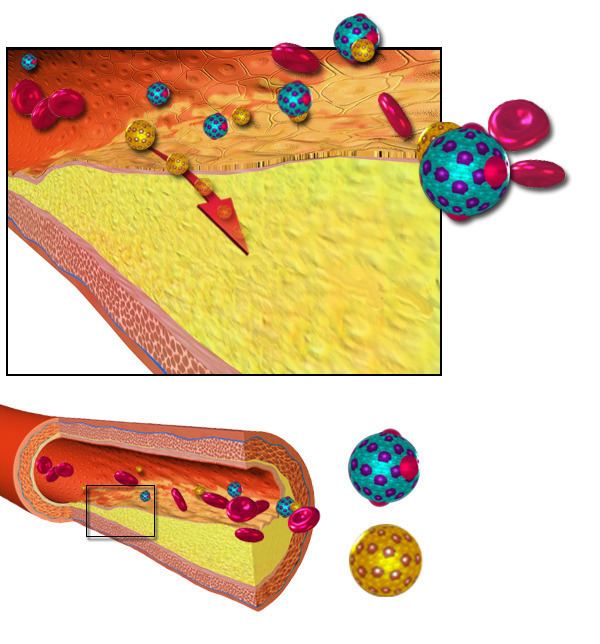Specialty Pathology DiseasesDB 1039 | ICD-10 I25.0,I25.1,I70 MeSH D001161 | |
 | ||
Arteriosclerosis is the thickening, hardening and loss of elasticity of the walls of arteries. This process gradually restricts the blood flow to one's organs and tissues and can lead to severe health risks brought on by atherosclerosis, which is a specific form of arteriosclerosis caused by the buildup of fatty plaques, cholesterol, and some other substances in and on the artery walls.
Contents
Signs/symptoms
Among the signs/symptoms of arteriosclerosis are: sudden weakness, facial or lower limbs numbness, confusion, difficulty understanding speech and problems seeing.
Pathophysiology
The lesions of arteriosclerosis begin as the intima (innermost layer of blood vessel wall) of the arterial wall start to fill up with the deposition of cellular wastes. As these start to mature, they can take different forms of arteriosclerosis. All are linked through common features such as the stiffening of arterial vessels, thickening of arterial walls and degenerative nature of the disease.
Diagnosis
Diagnosis can be based on a physical exam, blood test, EKG and the results of these tests (among other exams).
Treatment
Treatment is often in the form of preventative measures of prophylaxis. Drug therapy for underlying conditions, such as drugs for the treatment of high cholesterol, drugs to treat high blood pressure (ACE inhibitors), and anti-coagulant drugs, are often prescribed to help prevent arteriosclerosis. Lifestyle changes such as increasing exercise, stopping smoking, and moderating alcohol intake are also advised. Experimental treatments include senolytic drugs, or drugs that selectively eliminate senescent cells, which enhance vascular reactivity and reduce vascular calcification in a mouse model of atherosclerosis, as well as improving cardiovascular function in old mice.
There are various types of surgery:
Epidemiology
In 2008, the US had an estimate of 16 million atherosclerotic heart disease and 5.8 million strokes. Cardiovascular diseases that were caused by arteriosclerosis also caused almost 812,000 deaths in 2008, more than any other cause, including cancer. About 1.2 million Americans are predicted to have a heart attack each year.
History
This phenomenon may have existed since ancient times; however, its diagnostics and clinical implications were not recognized until the 20th century. While many cases have been observed and recorded, the term arteriosclerosis was not used until Jean Fréderic Martin Lobstein coined it while he was analyzing the composition of calcified arterial lesions.
Society and culture
The name comes from the Greek words αρτηρία, meaning artery, and σκληρωτικός, meaning hardened.
